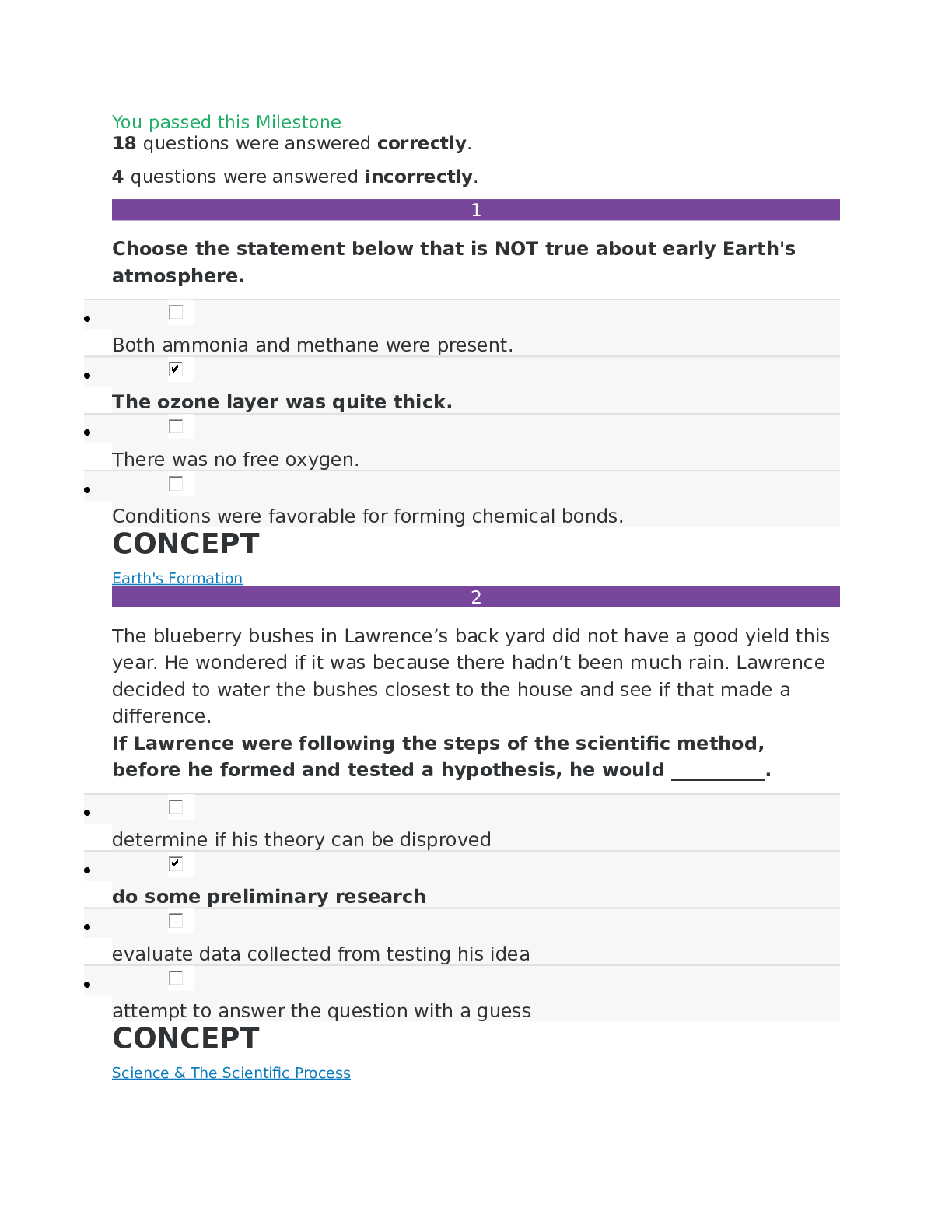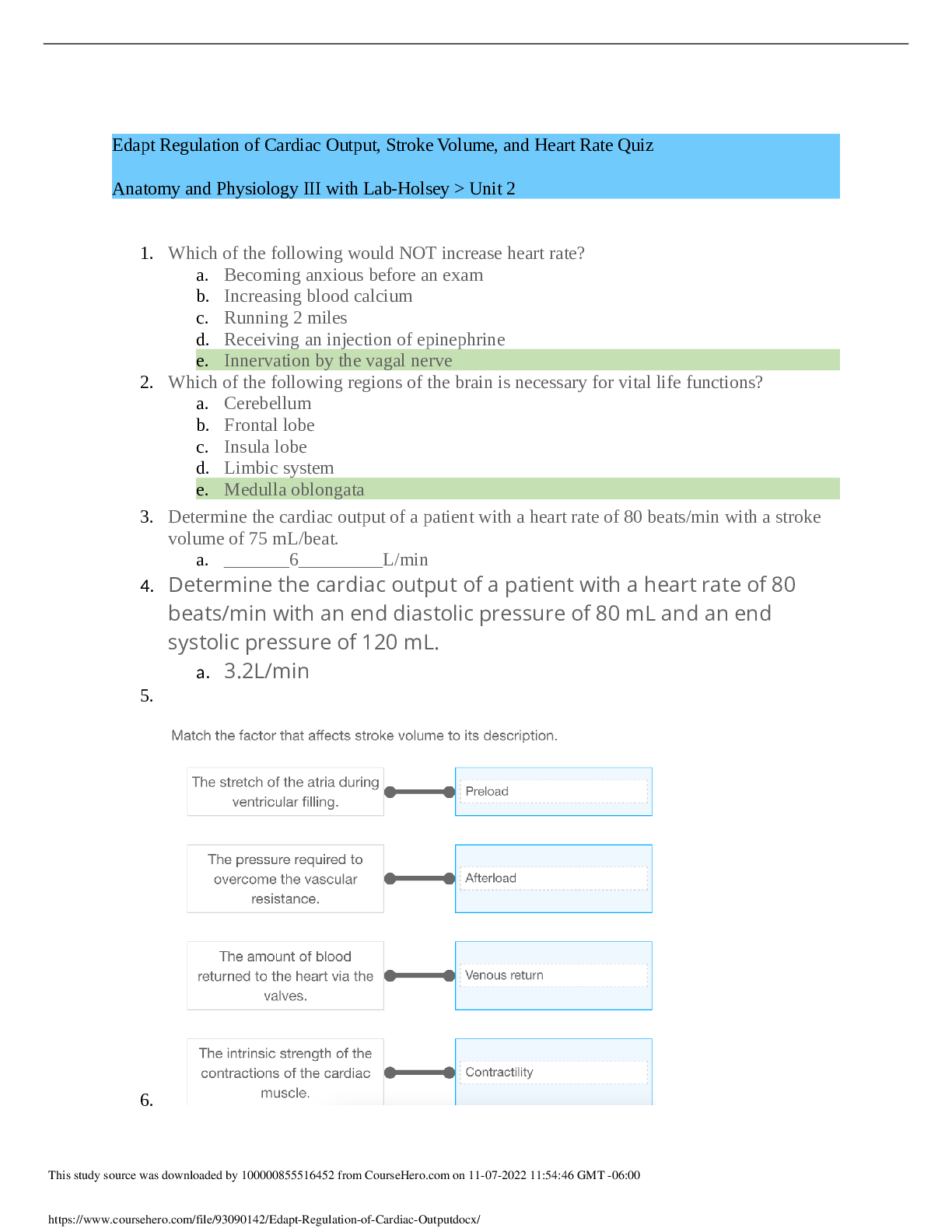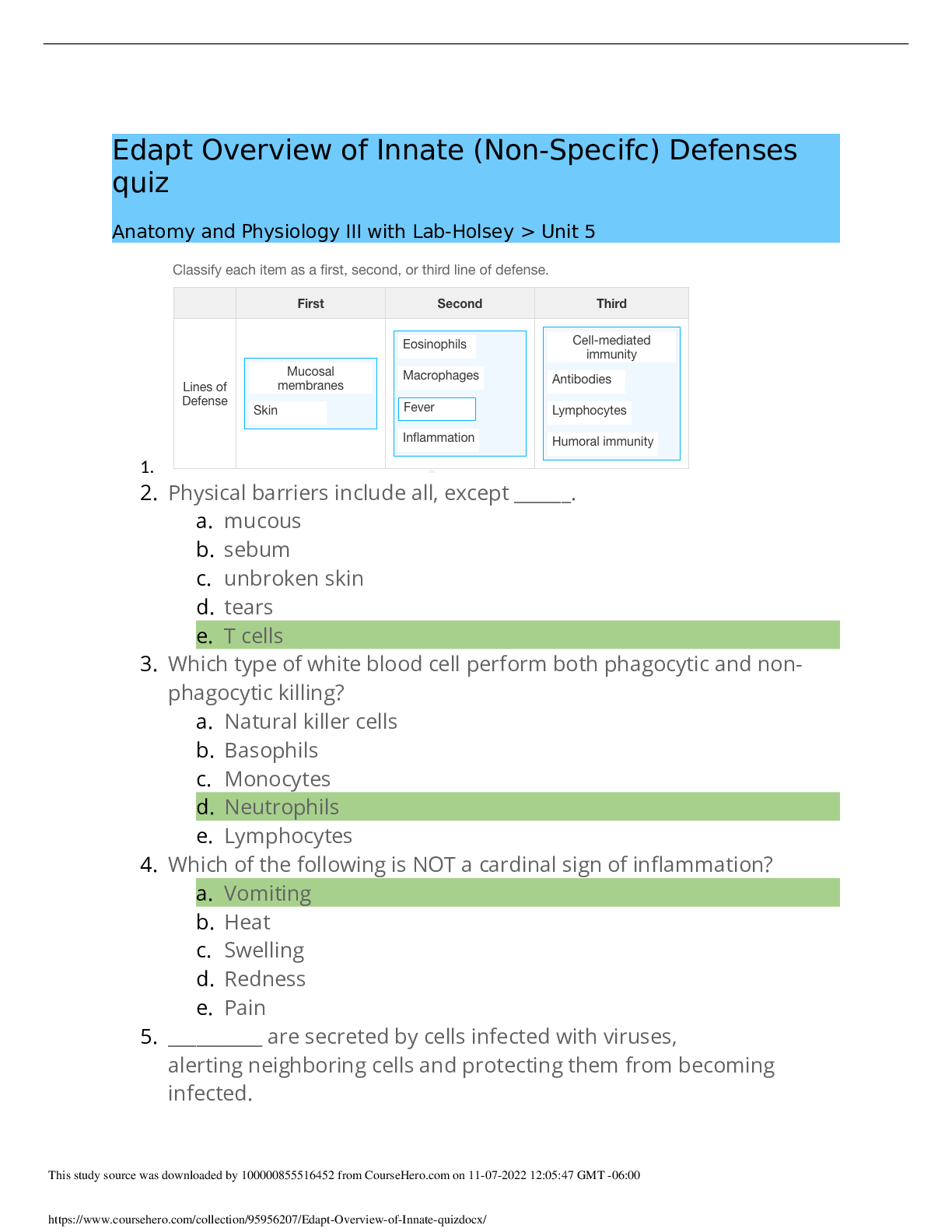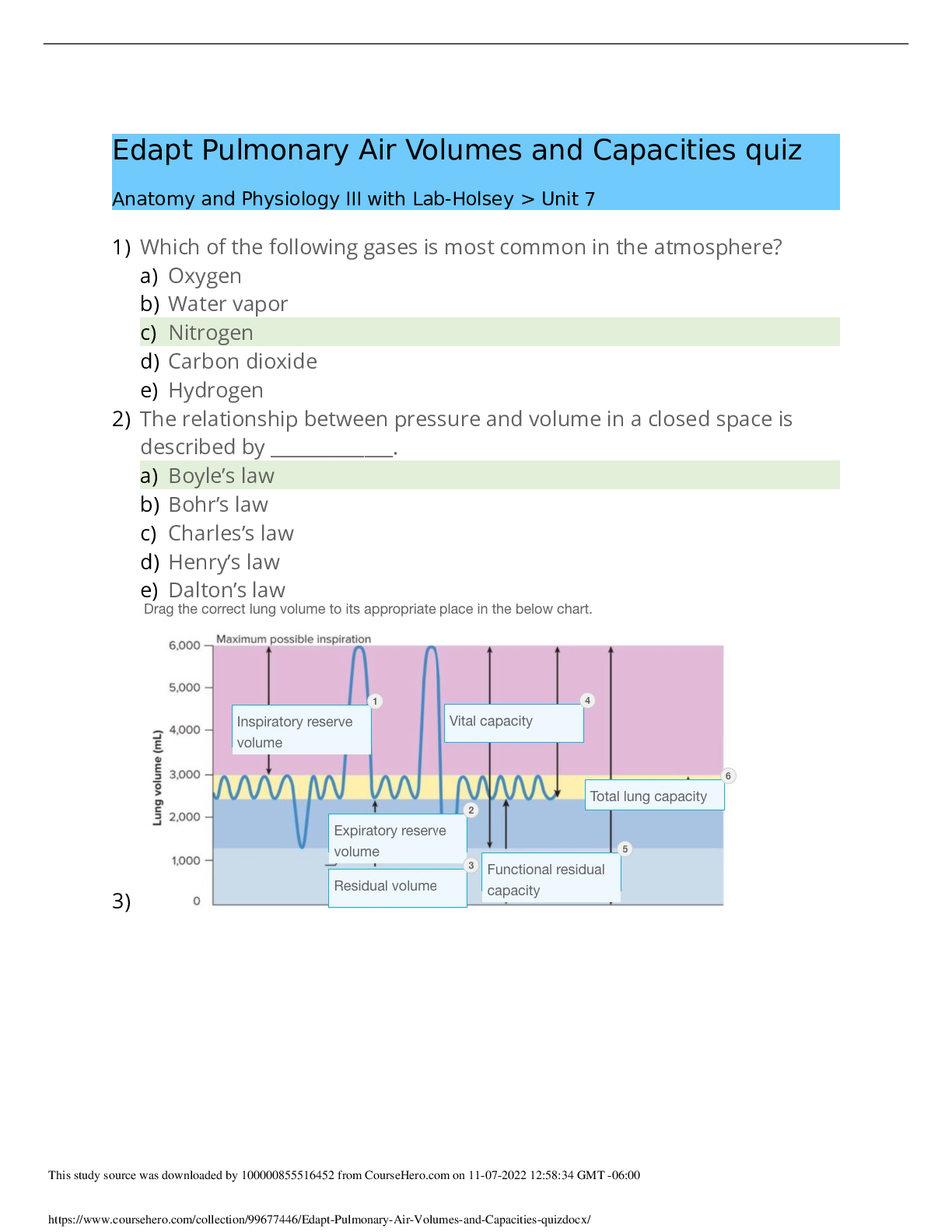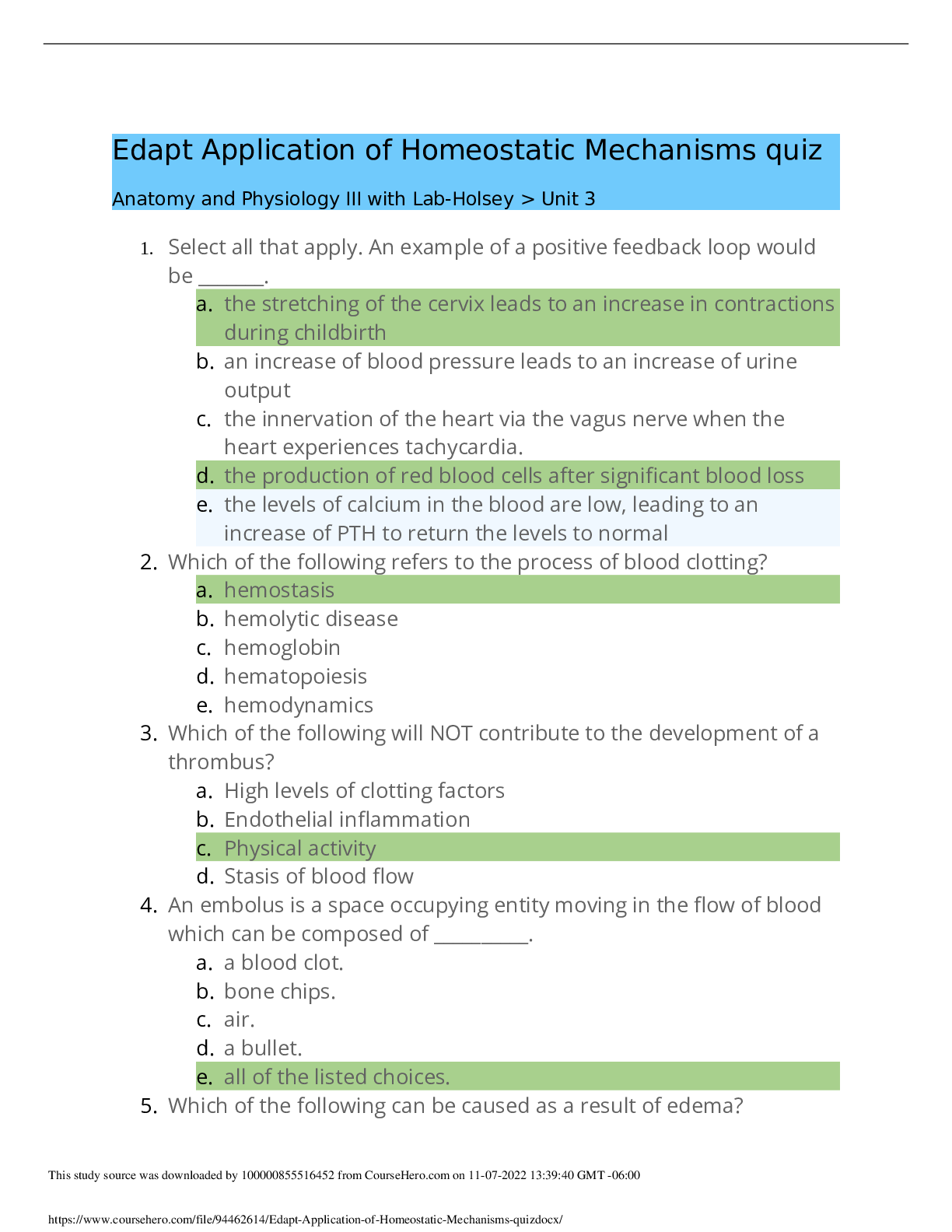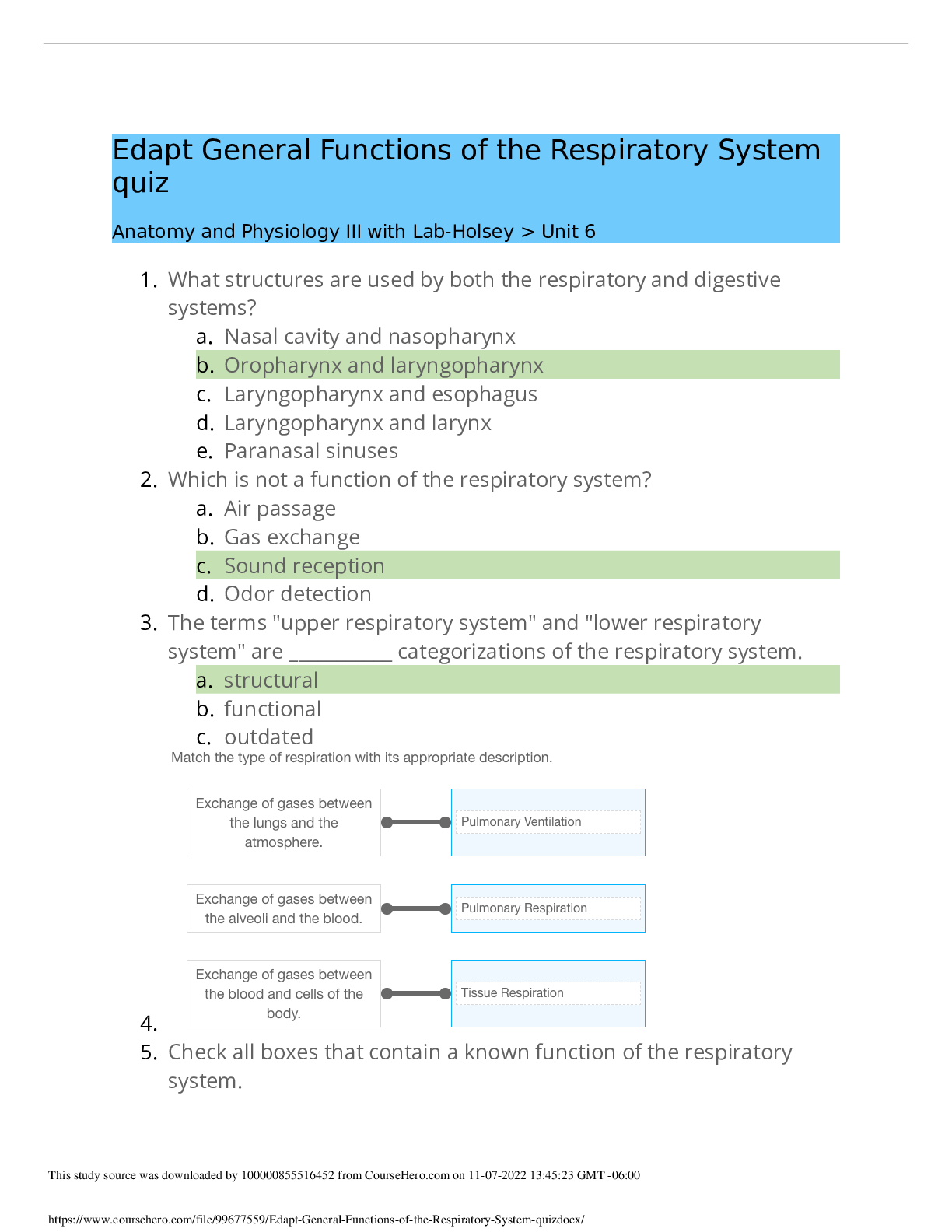Environmental Science > QUESTIONS & ANSWERS > ENV 101 Introduction to Environmental Science Study Guide for Exam 2: Chapters 4, 5, (A GUARANTEED) (All)
ENV 101 Introduction to Environmental Science Study Guide for Exam 2: Chapters 4, 5, (A GUARANTEED)
Document Content and Description Below
ENV 101 Introduction to Environmental Science Study Guide for Exam 2: Chapters 4, 5, (A GUARANTEED) Here are 100 review questions and a list of “key terms and concepts.” Understanding the key ter... ms and concepts in the review questions will help you greatly in being able to answer the questions. I will select 45 of these exact questions and put them on the exam, with A, B, C, D answer choices. I will include another five (5) questions (not in this review) based on films, supplemental readings or whatever I think relevant. Answer these review questions and you should have no problem getting an A on the exam! Please see with any problems finding answers in the text, PowerPoints or your notes on my lectures / films. Chapter 4: 1. What is the difference in the adaptation of a sled dog's (such as a Husky) thick coat of hair to help it withstand the cold temperatures of Arctic winters and a dog that adapts to cold temperatures in the fall by growing a thickened coat? The adaptation of the sled dog best describes adaptation at the ____________ level while the dog exposed to seasonal colder temperatures has _____________. A. Regional; natural selection at the individual level B. Individual; physiological modifications at the population level C. Population; physiological modifications at the individual level D. Species; natural selection at the population level E. Ecosystem; physiological modifications at the individual level 2. Evolution occurs as a result of A. The discovery of a desirable characteristic in a population B. An individual's physiological modification C. Environmental change that forces modification in a resident species D. Better survival or reproduction rates by individuals with a particular characteristic E. A population's physiological modification 3. Which of the following is a physiological modification used to adapt to environmental conditions? A. Young saguaro seedlings sprouting under mesquites B. Leaves becoming thick and leathery on a plant growing in a dry, hot climate C. Locoweed growing only where selenium is present in soil D. Desert pupfish learning to deposit eggs where temperatures are optimal E. All of these are examples of physiological modifications used to adapt to environmental conditions 4. Natural selection will ultimately make a species A. More intelligent B. Physically bigger C. Better adapted to its environment D. More aggressive E. Less vulnerable to its predators 5. Regular lawn mowing selects for short-headed rather than tall-headed dandelions because A. Tall flowers spread their seeds farther B. Tall flowers cannot reproduce C. Short flowers can reproduce D. Short flowers spread their seeds farther E. Short flowers have less competition when the lawn is mowed often2 6. Tolerance limits are _______ that limit a species' survival. A. Temperature ranges B. Any environmental conditions C. Population sizes D. Narrow salinity levels E. Undesirable toxin concentrations 7. A species can withstand a wide range of pH as an adult but the juveniles can only withstand a narrow range of pH. The abiotic factor, pH, would best be described as a A. Stress factor B. Intolerance factor C. Tolerance limit D. Critical factor E. Physical factor 8. Which of the following fish species would be the best indicator of clean, well-oxygenated water? A. Carp B. Largemouth bass C. Catfish D. Rainbow trout E. Sunfish 9. Populations are most critically limited by A. Available food B. Suitable shelter from the elements C. Available water D. Suitable shelter from predators E. Any of these, depending on the system 10. Indicator species, such as lichens, generally have a ___________ tolerance range for a ___________. A. Narrow; critical factor B. Narrow; number of physical factors C. Average; number of physical factors D. Broad; number of critical factors E. Broad; critical factor Use the following example: A species can withstand a narrow range of temperature. Above 100F there are no species present. In the range from 97F to 100F and 90F to 94F there are a few species present. Below 90F there are no species present. [Show More]
Last updated: 1 year ago
Preview 1 out of 19 pages
Instant download

Instant download
Reviews( 0 )
Document information
Connected school, study & course
About the document
Uploaded On
Jul 22, 2021
Number of pages
19
Written in
Additional information
This document has been written for:
Uploaded
Jul 22, 2021
Downloads
0
Views
50

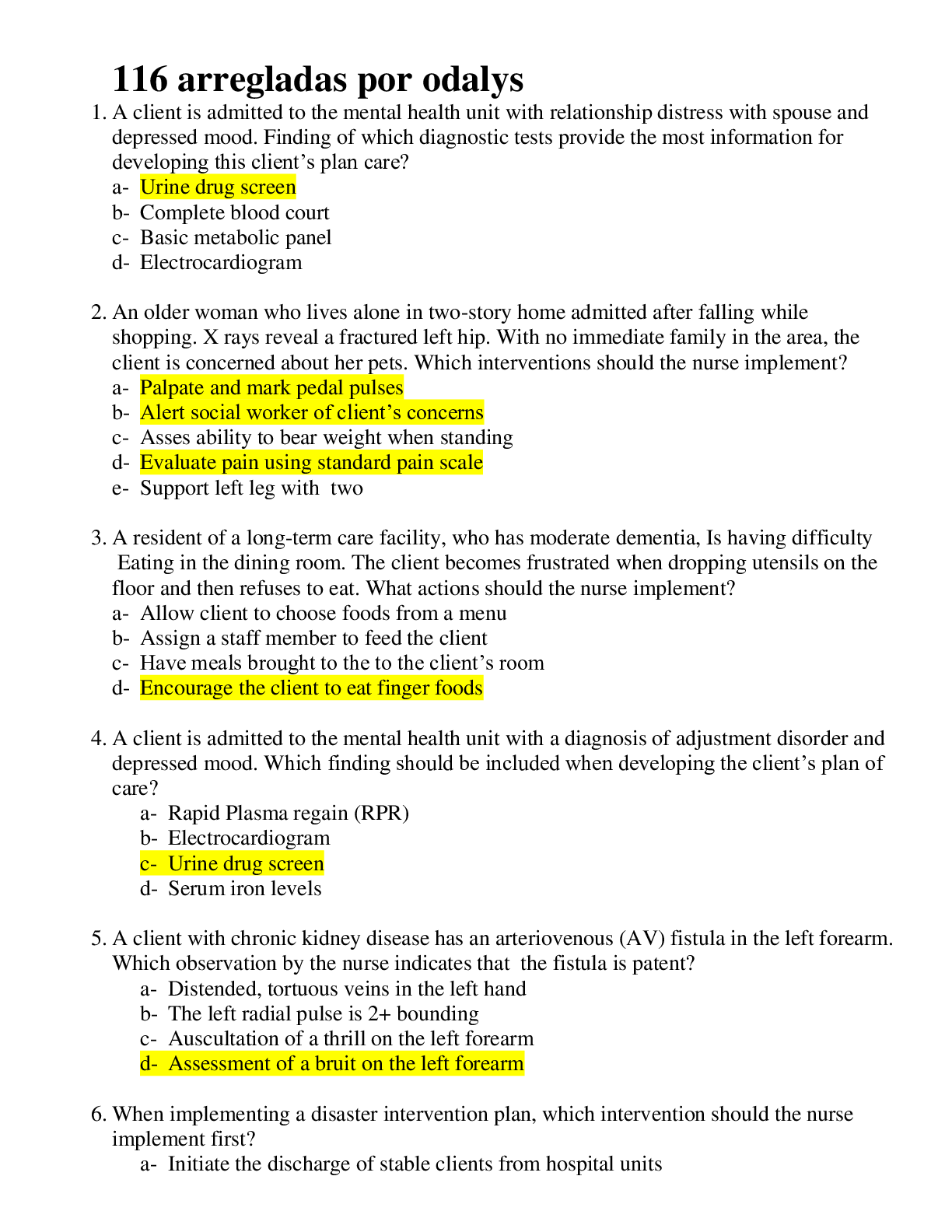
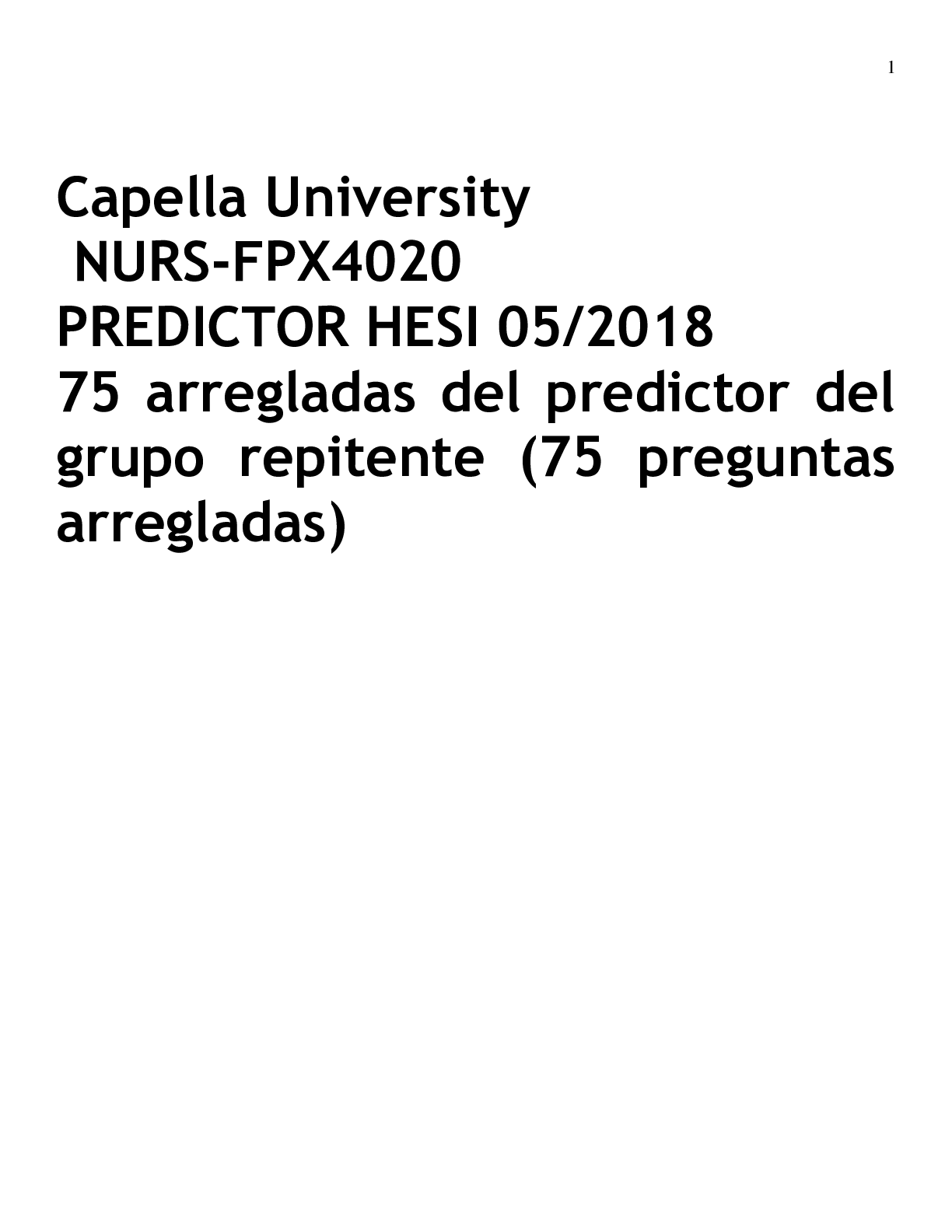

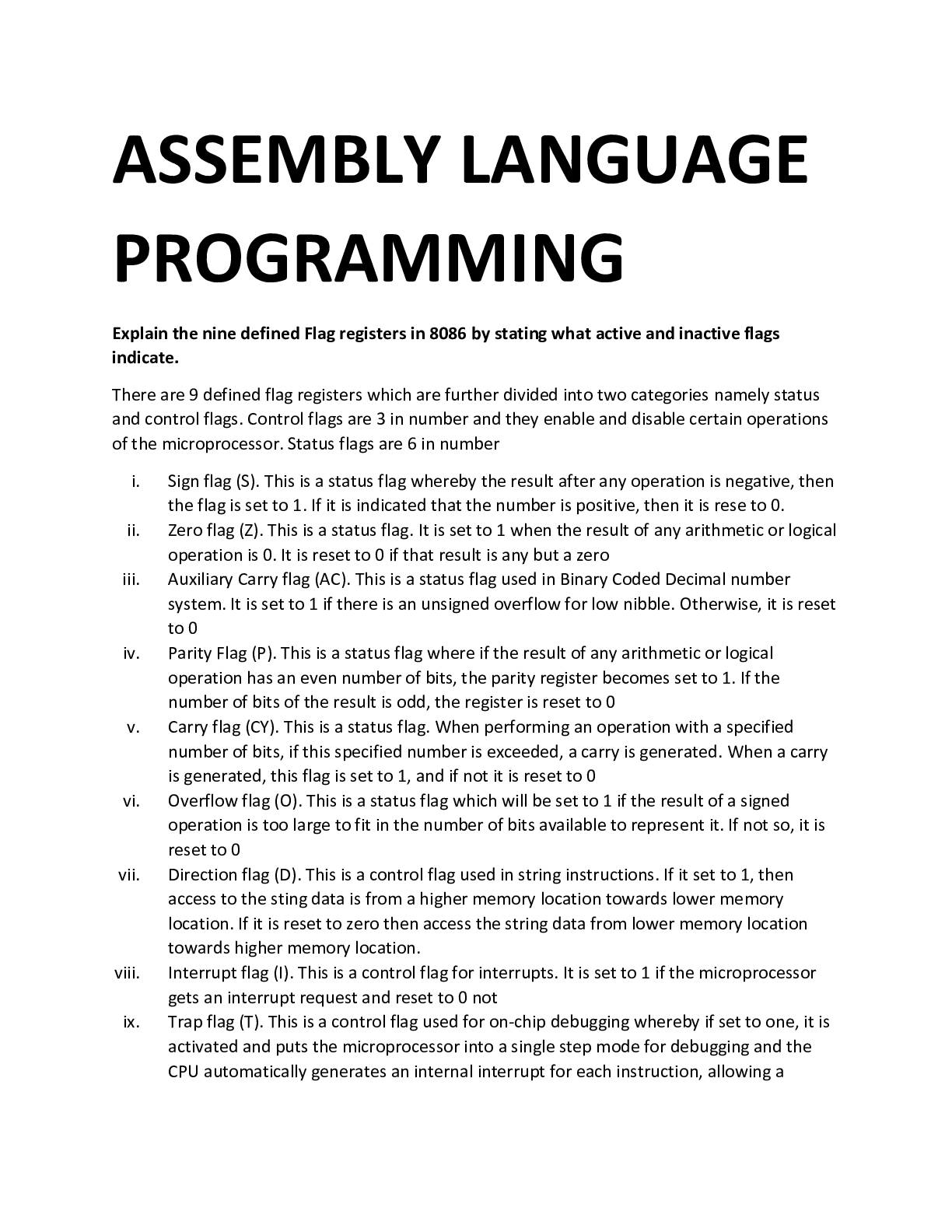
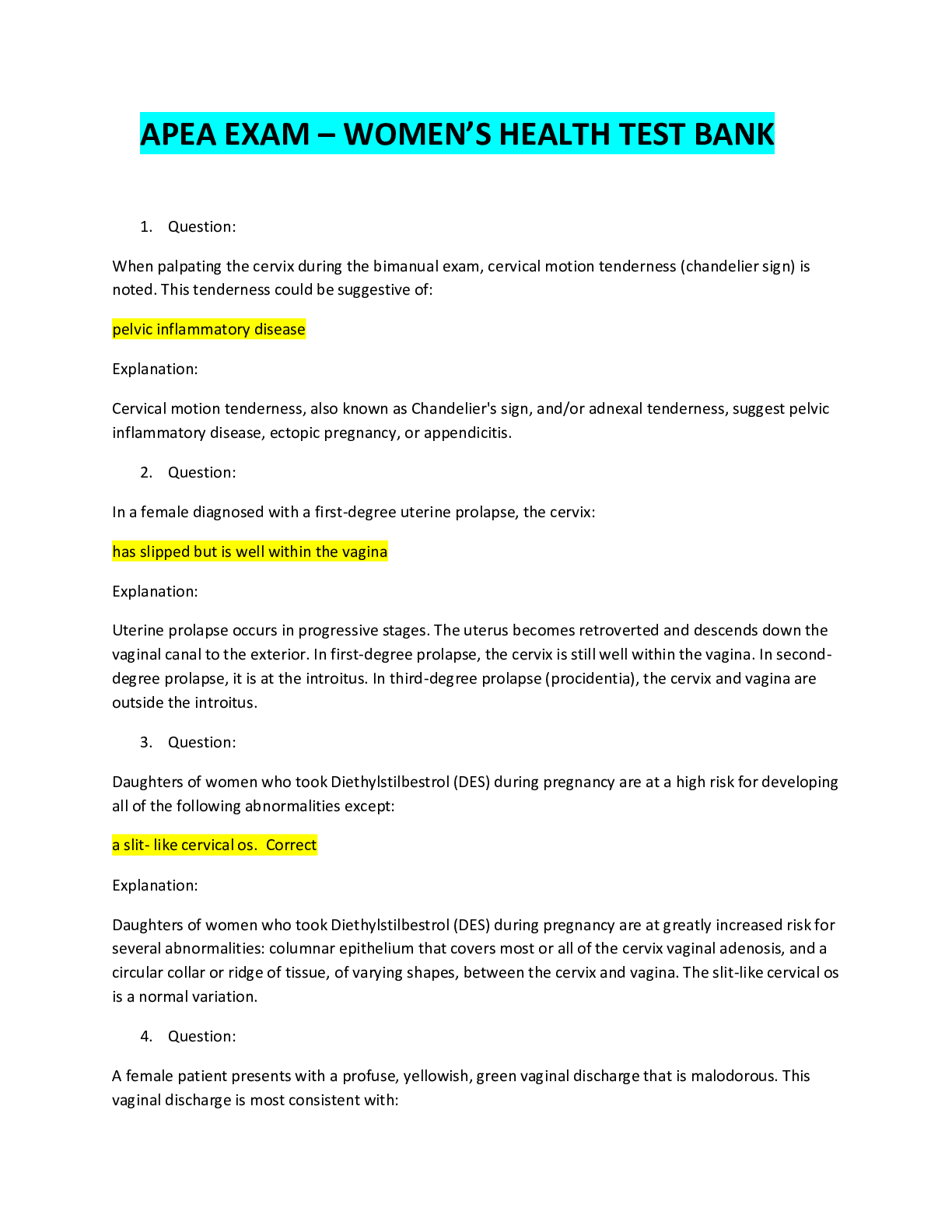

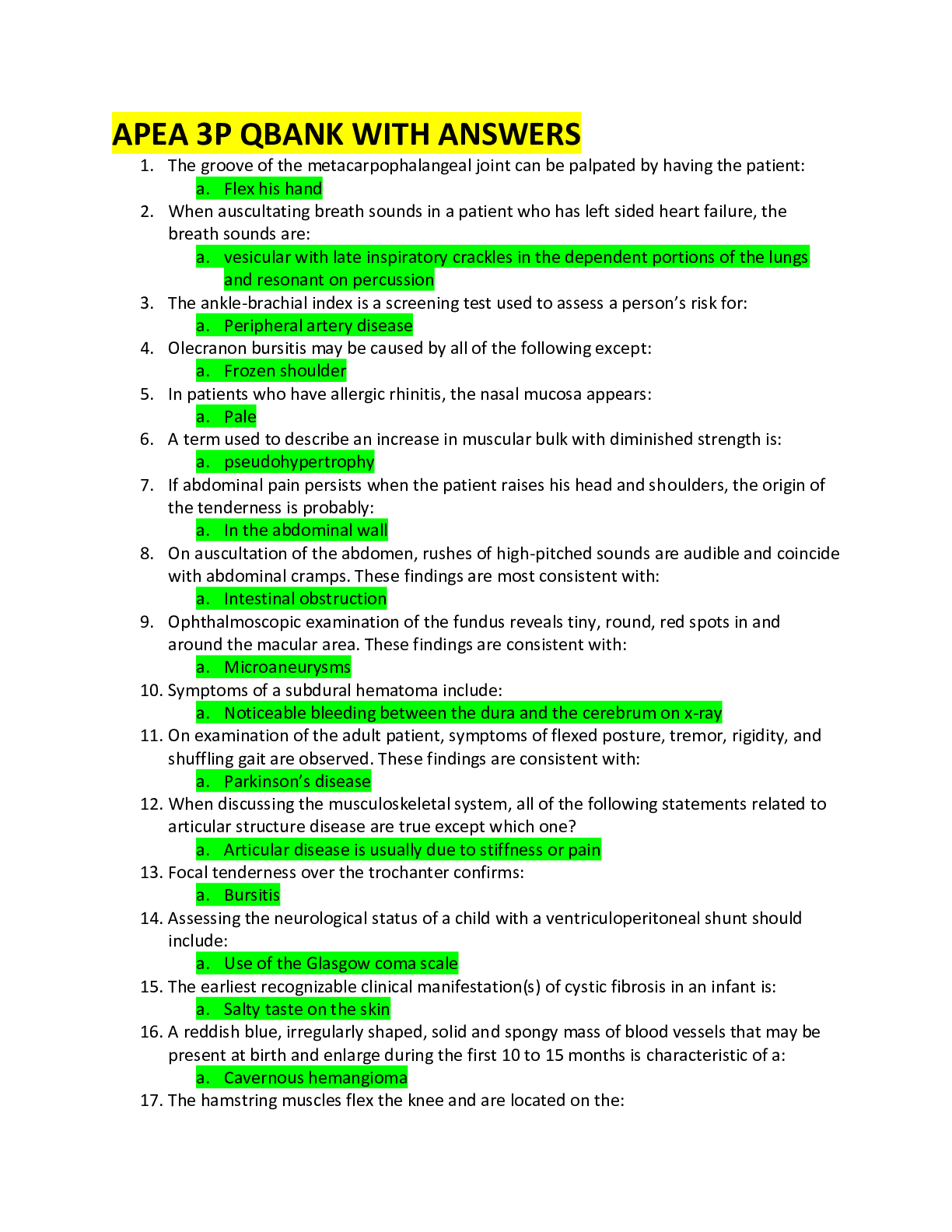
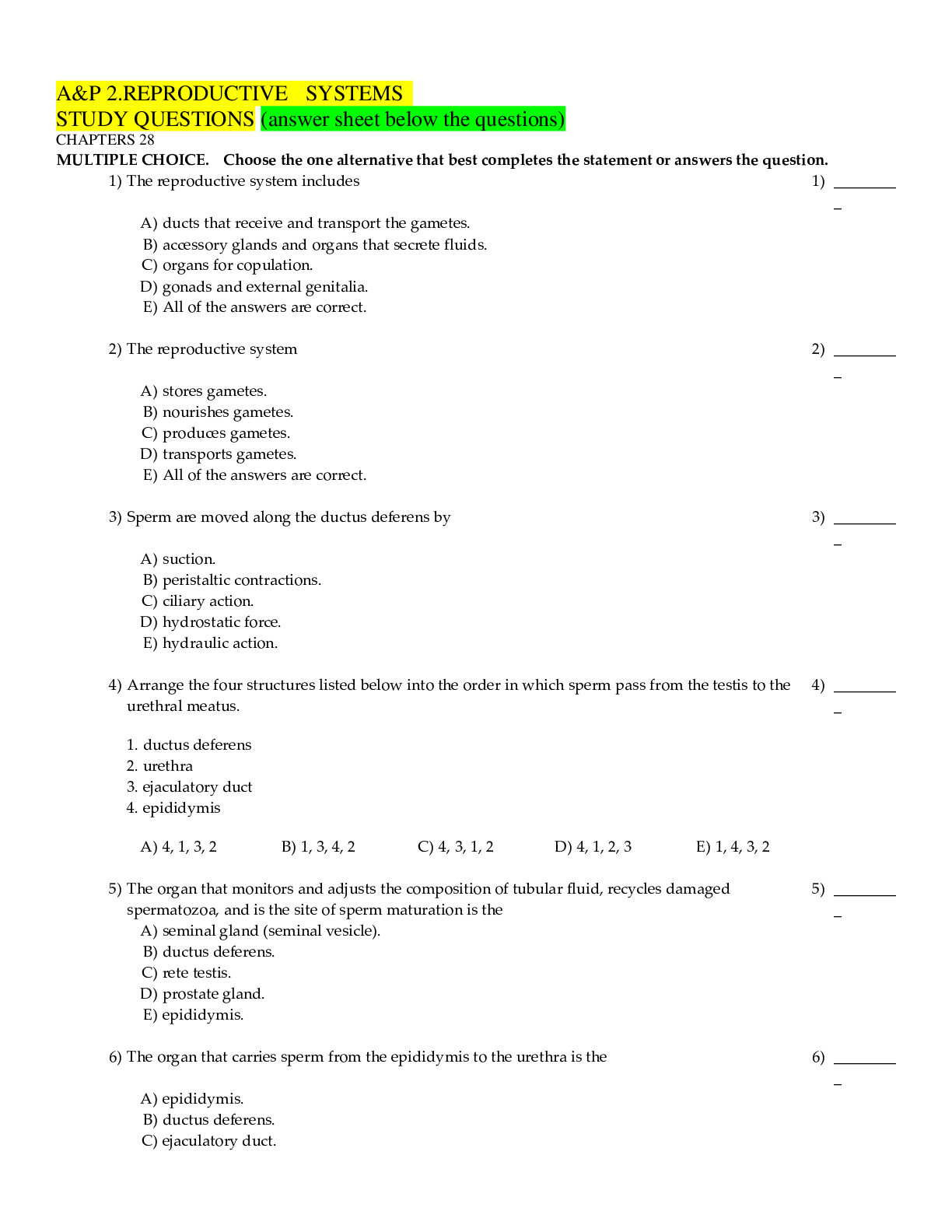


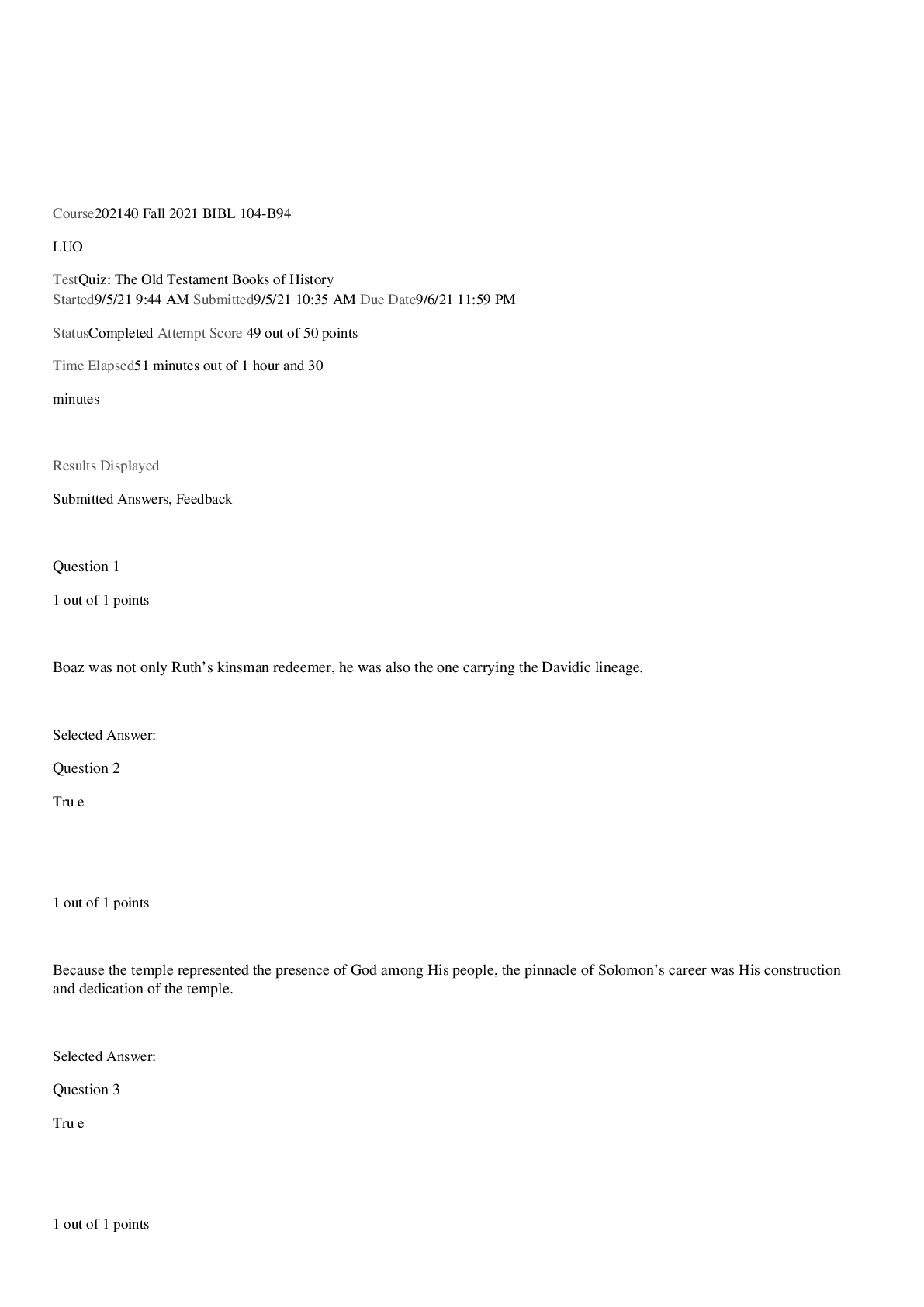
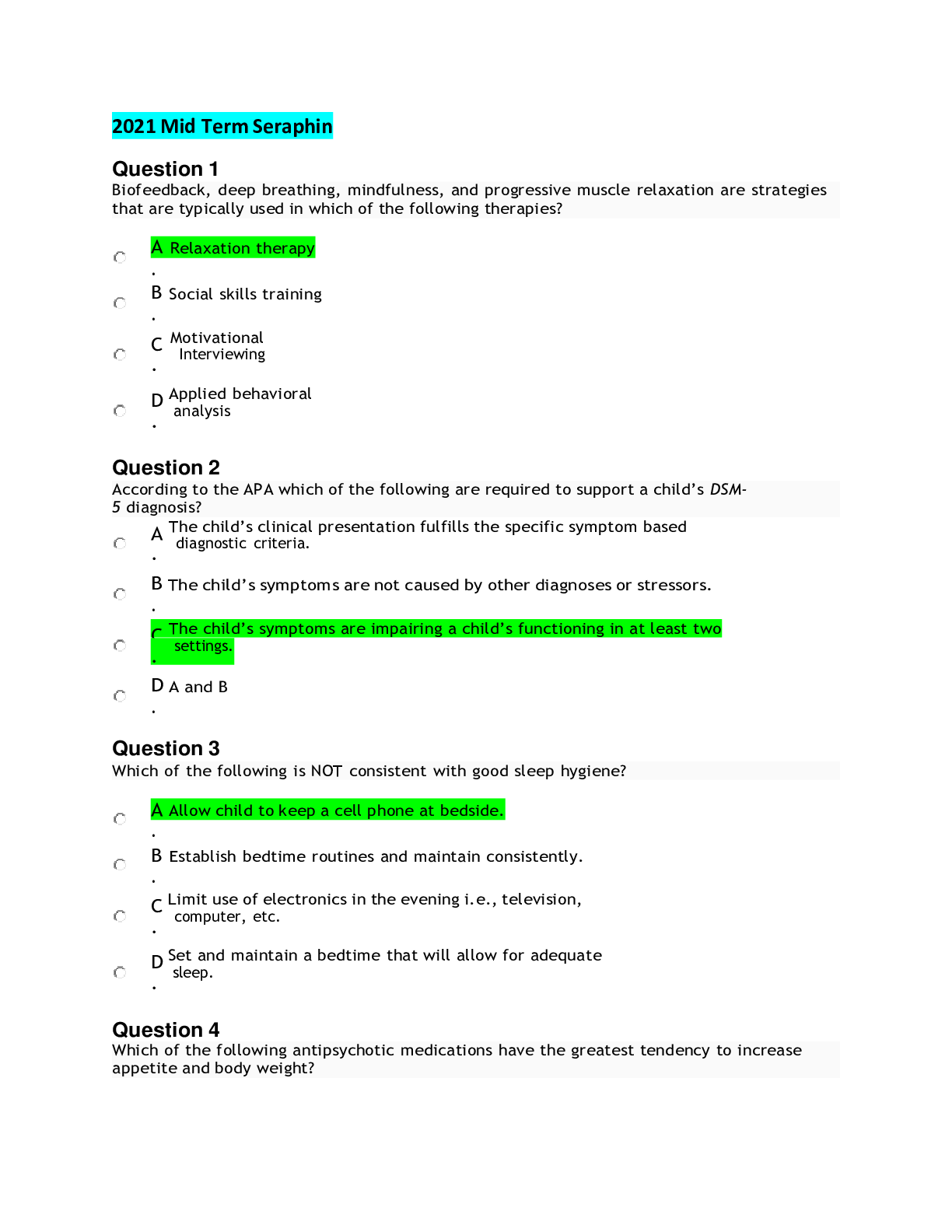


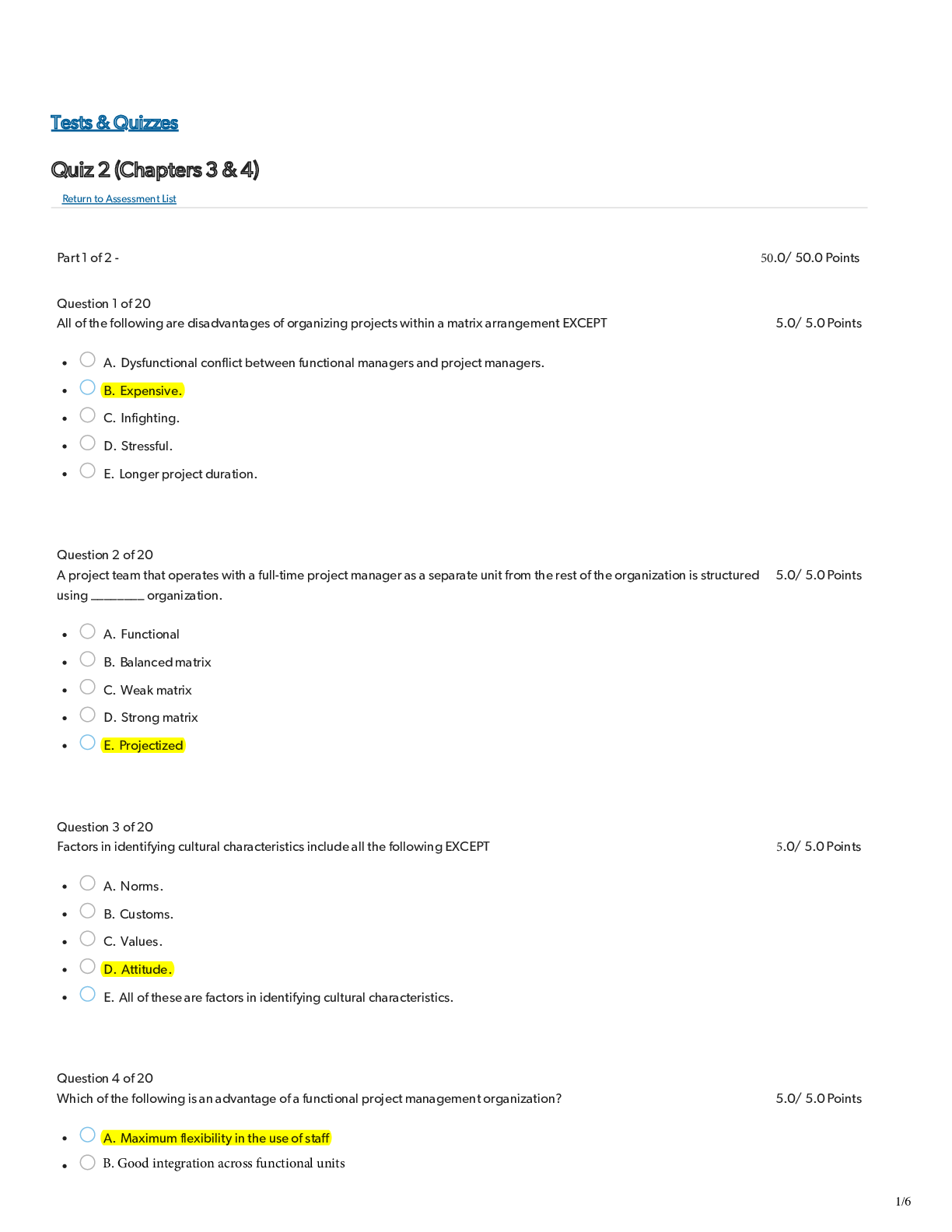

.png)
